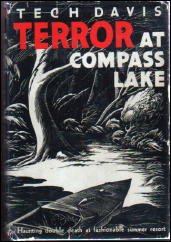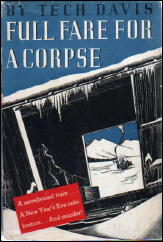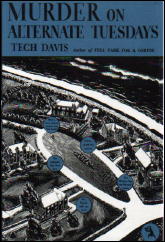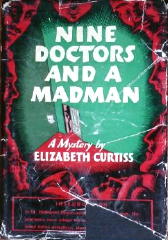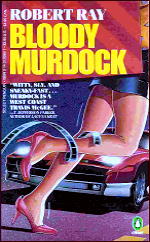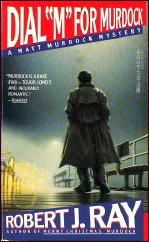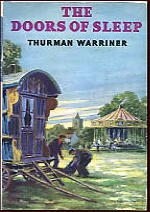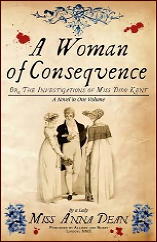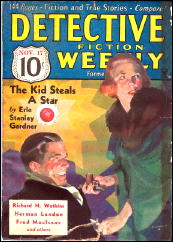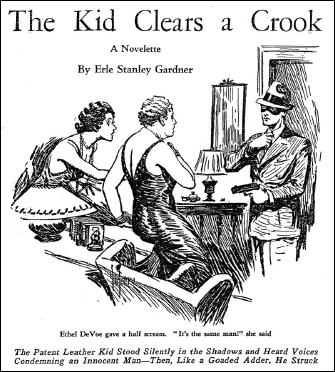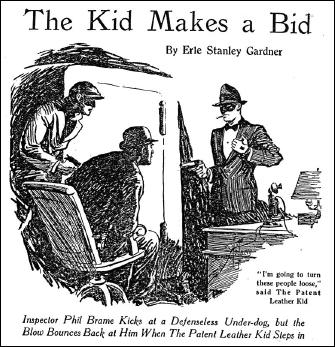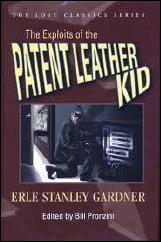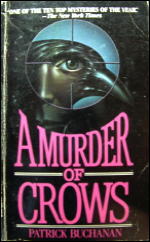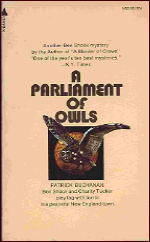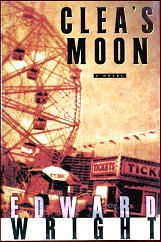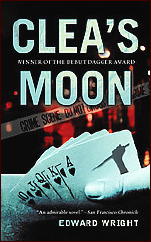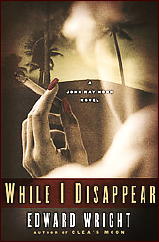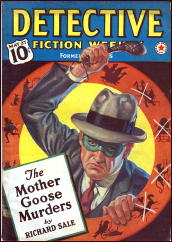THE SERIES CHARACTERS FROM
DETECTIVE FICTION WEEKLY
by MONTE HERRIDGE
#8. CANDID JONES, by Richard Sale.
The series discussed this time is the Candid Jones series, created by Richard B. Sale and running from 1937-41. Sale had five other series running in Detective Fiction Weekly at one time or another: Daffy Dill, Captain McGrail, Casey Mason, John the Cobra, and Owl-Eye Venner. So Sale’s stories, from this evidence, seem to have been popular with the readers.

The Daffy Dill and Candid Jones stories often were given covers for their issues. The very first Candid Jones story rated a special cover featuring Jones himself with his camera and gun. Daffy Dill describes Candid Jones in a later story: “He was a pretty big fellow, kind of homely, his face filled with freckles, his hair shiny as bright copper. … He had a strong jaw and clean eyes. … There was an air about him that meant Business with a capital B.†(Flash!)
The stories give a little background about Candid Jones and how he wound up as a photographer. His real first name is Terrence, and the Candid nickname was given to him because of his candid personality. He is a hardboiled character, and had quite a fearsome reputation as an investigator.
Jones started out being an investigator for an unnamed private detective firm, then after a year of learning the ropes, got a job with the Apex Insurance Company, on “the gumshoe trail of stolen gems and insurance chiselers.†(Make Way for a Dagger)
Photography was his hobby at that time, and he began selling some of his pictures. He eventually decided to make a business of his hobby and went into business for himself, after resigning in 1932 from his insurance job of thirteen years. His background as an investigator helps him when he gets involved in mysteries, and his success brings more cases.
His beginnings as a private investigator are seen in a flashback in the story “One Herring — Very Redâ€, in which he investigates the murder of a friend and mentor of his from that time period. At the end of this story he agrees to work for Apex Insurance Company on special assignments, otherwise he works on his photography jobs. And in another story, we learn of a previous marriage when he investigates a homicide and clears his ex-wife.

Regarding his hardboiled reputation, Jones admits that maybe he was: “I was never afraid of any man, and I always figured that if a guy was going to get rough with you, the best thing to do was to get rough with him first.†(Long Shot) He also notes that “Bluff is great stuff and so is a front. It goes a long way.†(Murder on the Film)
However, he noted, eventually you have to use your fists or bullets if it becomes necessary. Another of Sales’ characters, on the other hand, Daffy Dill, is not really a hardboiled character but always carries a gun because he deals with criminals and crimes regularly. Dill is a much easier going person.
Many series have a policeman as friend or antagonist to the main character, and this series has one. Inspector Harry Rentano is a friend of Candid Jones, and sometimes invites him along on his official investigations. Rentano is also available for any assistance Candid Jones may need on investigations he starts.
Rentano first met Candid Jones during the time Jones worked as an insurance investigator. He used to be on the police Bomb Squad, and worked on some Mafia cases. He is currently head of the Homicide bureau, and was known as a policeman more interested in knowing the truth about a case than in making an important arrest to impress people. He is married with four children.
The third member of the cast in the stories is Jones’ girlfriend, Claire Crossman. She is a model from the Frazier Agency, “and outside of being my favorite model, she’s about my favorite girl-friend too.†(Banshee) She often does not appear in a very prominent role in the stories, unlike Dinah Mason in the Daffy Dill series.
Candid Jones has two items he seems to carry with him everywhere. One is a camera, often a Leica, Model G. The other is his gun, a German 9mm Luger. He does not say where he picked up this weapon, but it is possible he is a war veteran.
One occasion where Jones used a different camera is in the story “You Can’t Print That!†where he takes an entire strip of twenty-four exposures with a robot camera that automatically takes the photographs and advances the film for the next exposure. It came in handy for the murder he witnessed, and left his other hand free to use his gun on the murderer.
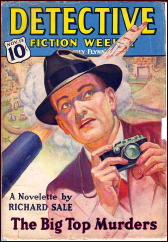
Jones uses his gun frequently in the stories, and in his own words, “I’ve got to admit I never had any scruples about killing a man. … I don’t like to kill … But when it’s my life against a rat’s.†(Murder on the Film) His camera saved his life on one occasion, when a bullet struck it rather than him. (The Big Top Murders)
To get an idea of the sort of crimes that Candid Jones becomes involved in investigating, a short survey of some of the stories is in order. “Long Shotâ€, the first story, involves an attempt to fix a horse race. It is a very violent story, and probably the most hardboiled of the series.
In “You Can’t Print That!†Jones witnesses a murder that is connected to the trial of a racketeer, and takes some photographs for his first newspaper job. In “Backstage†Jones makes a bet with Inspector Rentano that he can catch a double murderer by the next day. This one takes place at the local zoological park.
In “Banshee†Inspector Rentano asks Jones for help on the question of a banshee at the city aquarium, and gets involved with some criminals. In “Make Way for a Dagger†Inspector Rentano asks Jones along on a murder investigation aboard a yacht in the Hudson River, where the weapon is a harpoon.
In two of the stories Daffy Dill costars with Candid Jones: “Flash!†and “Death of a Glamor Girl.†Both characters appeared on the cover of “Flash!â€, thus promoting both series. Daffy Dill also makes a brief appearance in “You Can’t Print That!â€
At the time of the story “You Can’t Print That!†Jones had acquired a staff photographer position on the Chronicle newspaper at the salary of a thousand dollars a month, but he stated in “Banshee†that he had given up that position because there was “Too much of a sameness. I was getting rich without working. I’m on my own again.â€
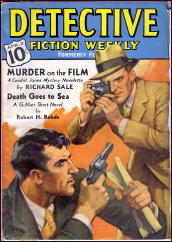
Photographs play an important part in the stories in the series, often revealing clues and serving as evidence of crimes. Jones’ photograph studio is on Fifth near Forty-Fifth Street. The studio is evidently well-equipped, having been set up for modeling sessions that Jones photographs, plus an excellent darkroom for developing film.
Jones works not only in black-and-white film but also does color prints, which is “a technical sort of job, involving separation of color values in the negatives and then dyes.†(Backstage)
There was an extended gap between the last two stories. The last story, “Delayed Action†in 1941, explained that some changes had taken place since the previous group of stories. Jones noted that it had been almost a year since he had been involved in any crime cases, and he intended to continue that way.
However, in this story he becomes involved in a crime case, and willingly so. He also notes that Claire Crossman has married someone else, so that romance is off. Candid Jones’ ex-wife plays a part in the story, and he protects her from the criminals. Inspector Rentano is mentioned in this story, but does not appear in it.
The series is worthy of being reprinted. Although not quite as numerous and popular as the Daffy Dill series, it is a good hardboiled detective series worth reading. One advantage to writing these series overviews is being able to reread the stories, especially the better ones like Candid Jones.
The Candid Jones series by Richard Sale:
Long Shot January 9, 1937
Neat But Not Gaudy January 30, 1937
Murder on the Film April 3, 1937
One Herring — Very Red May 1, 1937
Flash! May 29, 1937
The Camera Kills July 31, 1937
You Can’t Print That! August 21, 1937
Gaff! October 30, 1937
The Big Top Murders November 13, 1937
Back Stage January 15, 1938
Banshee April 9, 1938
Make Way for a Dagger August 27, 1938
Pictures in the Dark December 10, 1938
Torio Had a Friend March 25, 1939
Death of a Glamor Girl April 8, 1939
The Mother Goose Murders May 27, 1939
Tip Your Hat August 26, 1939
Someday I’ll Get You November 18, 1939
Delayed Action June 14, 1941
Previously in this series:
1. SHAMUS MAGUIRE, by Stanley Day.
2. HAPPY McGONIGLE, by Paul Allenby.
3. ARTY BEELE, by Ruth & Alexander Wilson.
4. COLIN HAIG, by H. Bedford-Jones.
5. SECRET AGENT GEORGE DEVRITE, by Tom Curry.
6. BATTLE McKIM, by Edward Parrish Ware.
7. TUG NORTON by Edward Parrish Ware.
